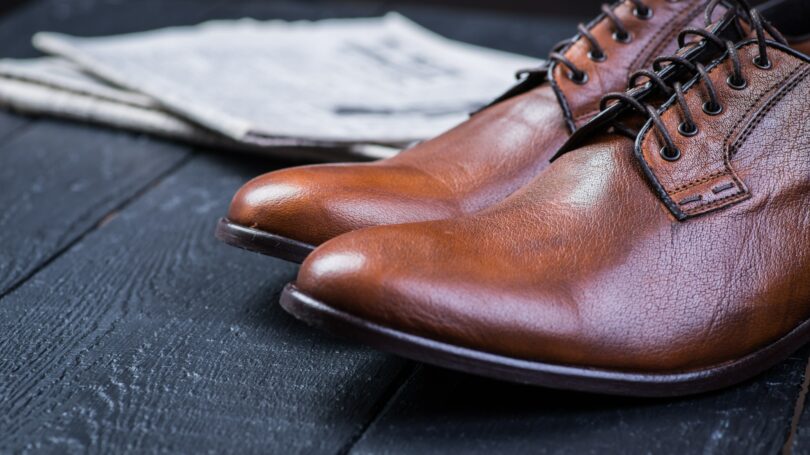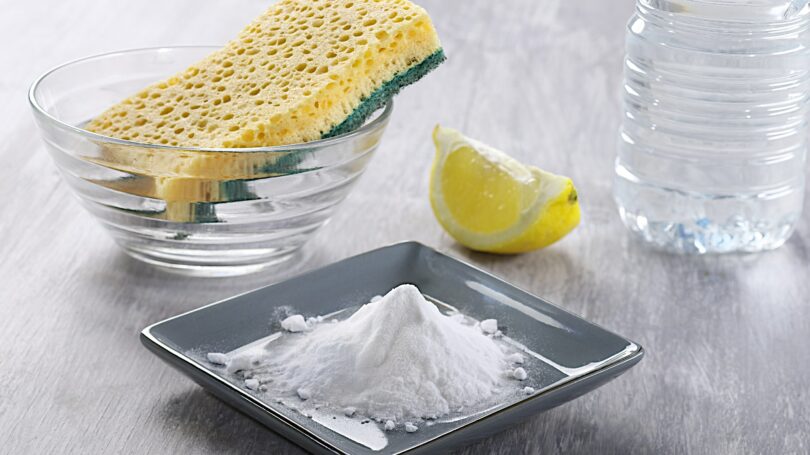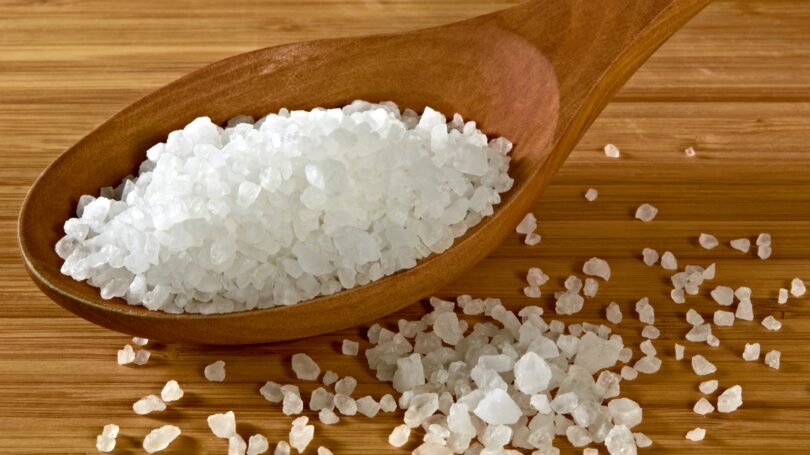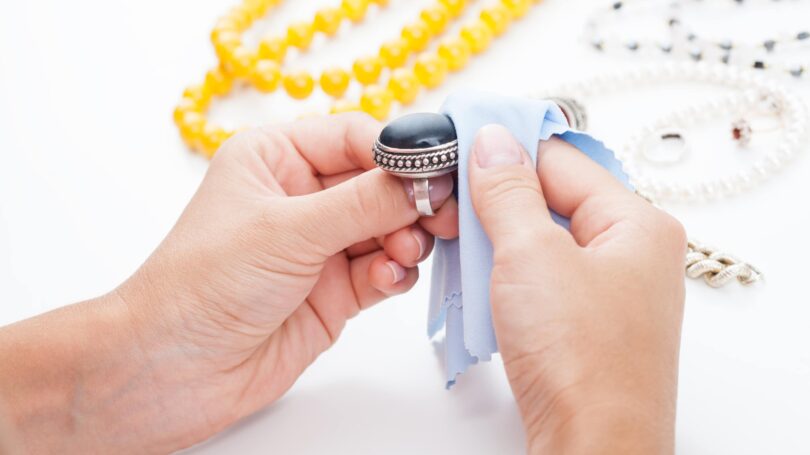For every minor household dilemma, it seems like there are numerous expensive products offering a solution. Perhaps you’ve been invaded by ants or fruit flies, or maybe all the stuffing has bunched up in your favorite comforter. Maybe you’re sick of throwing away perfectly good sliced apples that turned brown after being exposed to the air.
No matter how small the dilemma, you could still find yourself blowing your budget on specialized cleaners and gadgets that only serve one specific function. Or, you could save money by repurposing an inexpensive, everyday item and get the job done without spending unnecessary money. Here are a number of cheap solutions to potentially expensive problems.
How to Use Household Items to Solve Common Problems
1. Apple Cider Vinegar as a Fruit Fly Trap
Instead Of: A commercial fruit fly trap ($7)
Try: Apple cider vinegar ($0.19 per ounce, or $1.52 for a cup)
Solution: Simply fill a bowl with apple cider vinegar and leave it on your kitchen counter, or in proximity to an area that attracts fruit flies. You can add a drop of dish soap to break the surface tension so the fruit flies drown. If you want to make it even more difficult for flies to escape, pour the vinegar and dish soap solution into a narrow-necked bottle (such as an old soda bottle).
2. Uncooked Spaghetti Noodles as a Lighter for Multiple Candles
Instead Of: Using multiple matches ($4.99 per box)
Try: An uncooked spaghetti noodle ($2.18 for a 32-ounce box)
Solution: If you have ever tried to light many candles on a birthday cake, you likely have to burn through a dozen matches. Instead, light one candle and then stick the end of an uncooked spaghetti noodle into the flame. Use the noodle to light multiple additional candles. You’ll save matches and save your fingertips – plus, this makes it easier to access those hard-to-reach candles in the back.
3. Lemon Juice to Preserve Food Prone to Browning
Instead Of: Throwing away browned guacamole, apples, and pears
Try: Lemon juice ($0.15 per ounce)
Solution: Apples, pears, and guacamole are all prone to turning brown when exposed to air. Instead of throwing away browned food, you can slow down the browning process before it happens. Use lemon on the cut fruit or surface of the guacamole to delay or prevent browning.
You can either slice a lemon in half and rub it on the fruit, or squeeze the lemon juice onto the guacamole. You can also use bottled lemon juice – a little goes a long way.
4. Newspaper to Dry and Deodorize Shoes and Food Containers
Instead Of: A commercial shoe dryer ($40) or replacing food containers ($20 for a 12-piece set)
Try: Newspaper ($1 or less)
Solution: Cram crumpled newspaper into wet, stinky shoes and leave them overnight to dry from the inside. And if your food containers contain scents reminiscent of the last few fragrant foods stored in them, the crumpled newspaper trick should help remove the smell. Simply fill a clean, dried container with newspaper, replace the lid, and allow it to sit overnight. You can sprinkle in a bit of baking soda to increase deodorizing power.

5. Olive Oil as an All-Purpose Moisturizer and Makeup Remover
Instead Of: Drugstore hand lotion ($7, or $0.38 per ounce) and makeup remover ($6, or $1.00 per ounce)
Try: Olive oil ($0.21 per ounce)
Solution: Olive oil isn’t just for cooking – it can also do double-duty as an all-purpose moisturizer (for hands, elbows, cuticles, and more). Simply apply a few drops and rub it into your skin.
Olive oil also works very effectively as a makeup remover. Apply a bit of olive oil to a cotton ball and swipe it gently across your (closed) eyes and face, and then wash your face as usual.
6. Dryer Sheets as a Duster
Instead Of: The leading disposable duster ($24 for a handle and 24 refills)
Try: Dryer sheets ($0.03 per sheet)
Solution: Dryer sheets are designed to attract lint, dust, and dirt. That makes them excellent substitutes for traditional dusters. Run a dryer sheet along your baseboards, on top of tables, on shelves, or anywhere else that attracts dust.
7. Coffee Filter as Lint-Free Screen Cleaner
Instead Of: Commercial screen cleaning kit ($14 for spray and wipes)
Try: Coffee filters ($0.01 per filter)
Solution: Coffee filters don’t leave lint residue behind like many cloth and paper wipes. Simply wipe an unused coffee filter on your computer, smartphone, tablet, or television to clear dust and lint without streaks and residue. No specialty spray or cloths needed.
8. Baking Soda to Remove Crayon, Pencil, Ink, and Scuff Marks From Painted Surfaces
Instead Of: Touching up the paint every time the wall is marked ($20 for a pint of interior paint, plus $9 for a paintbrush)
Try: Baking soda ($0.14 per ounce)
Solution: If you have children, you’re bound to end up with some crayon or ink on your walls at some point. Even if you aren’t a parent, all of us have accidentally pushed a piece of furniture against a wall and created a stubborn scuff mark. While you can shell out for new paint and hope it matches, you could simply put baking soda to work.
Place approximately one tablespoon of baking soda into a small bowl and mix in drops of water until it forms a paste. Apply it to the scuff mark using a clean cloth and gently scrub the mark. If you’re concerned about the durability of your paint, you can test the solution in an inconspicuous spot before you attack the scuffed area.

9. Plastic Sandwich Bag as a Water-Resistant Smartphone Case
Instead Of: Buying a special waterproof case ($10) or replacing a wet smartphone ($200 or more)
Try: A plastic sandwich bag ($0.02 per bag)
Solution: I’m a distance runner, and a little rain never stopped me from hitting the pavement for a run. However, a little rain would stop my smartphone in its tracks. To combat moisture from rain (and sweat) I simply slide the phone into a plastic sandwich bag with a zipper seal before I run.
The touchscreen still works through the plastic bag, and I can even let my headphone cord squeeze out through a corner. This solution is also great for the beach or any place where a yucky combination of sand and water might threaten your phone.
10. Rice to Revive a Wet Smartphone
Instead Of: Replacing a wet smartphone ($200 or more) or paying for repairs (at least $100)
Try: Rice ($0.07 per ounce, or $1.12 for two cups)
Solution: If your phone is dropped in a toilet or soaked with rain, rice can be your saving grace. Retrieve your soaked phone from the water as quickly as possible and, if it was on, shut it off. If it’s already off, do not try to turn it back on. Submerge it in a bowl of dry, uncooked rice. Rice soaks up moisture and can help extract moisture from the nooks and crannies of your phone.
Leave your phone in the bowl of rice for 24 hours. While it’s by no means a foolproof solution, it is worth a try, as the “rice trick” has saved many a soaked smartphone.
11. Cardboard to Prevent Frost, Snow, and Ice Build-Up on a Car Windshield
Instead Of: Commercial window de-icing spray ($13) and ice scraper ($4)
Try: Cardboard (free if you reuse a shipping box)
Solution: As a Minnesota native, I’m an expert on ice. I’ve tried all the Pinterest solutions for keeping ice and snow on a car windshield, but none of them are particularly effective, and some can be very corrosive. In truth, nothing works better than a simple sheet of cardboard.
Tear open a shipping box and place it over your windshield before you turn in for the night. It may not be the prettiest solution, but showing up at work 20 minutes late, sweaty and covered in ice crystals, isn’t very pretty either.
12. Salt as an Ant Repellent
Instead Of: Chemical ant repellent ($6) or an ultrasonic repelling unit ($30)
Cost: Salt ($0.04 per ounce)
Solution: It’s frustrating to have ants parading around your house. But instead of resorting to using an expensive ultrasonic unit or a chemical repellent that could be harmful for pets and children, consider using salt.
There are two ways to use salt as an ant repellent:
- Mix a Saltwater Solution. Add 1/4 cup of salt to a 20-ounce spray bottle and fill with water. Spray around entrances, window sills, or any other places where the ants are entering your home.
- Sprinkle a Salt Barrier. Ants aren’t typically willing to cross a salt barrier, so if you’ve identified a specific spot where they tend to come in, consider sprinkling a solid trail of salt along that barrier. Reapply the barrier as needed.

13. Shower Cap to Protect Shoes During Travel
Instead Of: Paying for laundry service at your hotel ($5 or more for a collared shirt, and $10 or more for a suit or dress)
Try: Shower caps (free at many hotels, and approximately $0.06 per cap if purchased)
Solution: It’s frustrating to arrive at your destination for a business trip, only to find that the shoes you packed in your bag have left dirt and smudges on your carefully folded clothes. Hotels typically outsource laundry service to area dry cleaners, and the resulting cost can lead to major sticker shock.
Prevent the problem using an item you’ll most likely be given for free at the hotel: a shower cap. Simply place your shoes in the cap, covering the soles, and you’re covered for the trip home. Grab an extra shower cap for your next trip.
14. Rubber Bands to Turn Cheap Hangers Into Non-Slip Hangers
Instead Of: Non-slip hangers ($35 for a pack of 50)
Try: Rubber bands ($0.01 per band)
Solution: Camisoles, dresses, and silky blouses are notoriously prone to slipping off cheap hangers. Aside from causing frustration, you could end up having to pay for dry cleaning or pressing for clothes that fall off the hangers and wind up in a heap at the bottom of your closet.
Instead of spending money on upgraded hangers, upgrade your own hangers by slipping a plain rubber band onto both ends of your hanger. The rubber will act as a stopper for thin straps, and it also causes friction that helps keep silky blouses and dresses from sliding off. If you need more resistance, use extra rubber bands.
15. Binder Clip as a Money Clip
Instead Of: A traditional money clip ($15 for a low-end clip)
Try: Metal binder clip ($0.10 per clip)
Solution: My husband swears by this trick, using a metal binder clip to secure a neat stack of IDs, credit cards, membership cards, and cash. A binder clip works just like a money clip, but you probably already have a binder clip (and several backups) collecting dust in your office drawer. Using these clips, it’s easy to see what you have, and it’s easy to remove the clip so you can access the item you need.
16. Cooking Spray to Prevent Ice and Snow Build-Up on a Snow Shovel
Instead Of: A trip to the chiropractor ($60 to $185 for an initial consultation)
Try: Cooking spray ($0.50 per ounce)
Solution: Whether you’re battling ice and snow in your driveway several times per week, or only have to face it during a freak snowstorm every few years, shoveling can take a serious toll on your back. As ice and snow builds up on your shovel, the shovel becomes heavier and more difficult to maneuver.
To make the job less stressful, spray your shovel with cooking spray before you begin the job. Ice and snow will slide right off, making the chore quicker, easier, and gentler on your back.

17. Plastic Drinking Straw to Pit and Core Fruit
Instead Of: Commercial cherry pitter and strawberry pitter ($13)
Try: A plastic drinking straw ($0.01 per straw)
Solution: You could fill your kitchen to the brim with little gadgets designed to tackle every imaginable task. Instead, save your money – and your kitchen storage space – by using a plastic drinking straw as a multi-purpose tool.
To pit cherries or core strawberries, start from the top of the fruit and push the straw through to the bottom. The pit or core will catch in the straw and come out the other side. You can even stack up multiple pieces of fruit on the straw to save time.
18. Plastic Drinking Straw to Prevent Tangled Necklaces During Travel
Instead Of: Replacing tangled necklaces or paying a jewelry store to remove knots ($10 or more per tangled chain)
Try: A plastic drinking straw ($0.01 per straw)
Solution: A plastic drinking straw can help you keep your necklaces from tangling in your suitcase during a trip. Just string one side of your necklace all the way through the straw and clasp it shut on the other side.
19. Felt Furniture Protecting Circles to Create Soft Close Doors and Cabinets
Instead Of: A soft close cabinet and drawer adapter ($60) or upgrading to soft close when purchasing new cabinets (approximately $25 per cabinet door or drawer)
Try: Felt furniture-protecting circles ($0.08 per pad)
Solution: Soft close doors and drawers provide a high-end feel to kitchens, and also minimize the clang and clatter of your midnight snack attack. Unfortunately, they’re also expensive.
Instead of paying to upgrade all of your doors and drawers, simply stick a small circle of felt (the type intended to protect floors from furniture legs) at the impact point of any door or drawer you wish to improve. While it won’t affect the hinge and actually make the door or drawer close more slowly, the felt will deaden the sound.
20. Clear Nail Polish to Upgrade Inexpensive Jewelry
Instead Of: Expensive jewelry ($500 and up)
Try: Clear nail polish ($3 for a drugstore brand, plus the cost of inexpensive jewelry)
Solution: Inexpensive jewelry, especially costume jewelry, is a great way to take part in a seasonal trend and add flair to an outfit. Of course, jewelry can be very expensive, and unfortunately, cheaper alternatives that aren’t made with solid materials such as silver, gold, pearls, or gemstones can show their low price. Rings made of cheap metals often leave greenish marks on your skin, and earrings or necklaces made with cheap plastic coating can flake off.
Clear nail polish can come to the rescue in both scenarios. Paint the inside of a cheap ring with clear nail polish to prevent or delay the finish wearing off and leaving the green marks. You can also paint over the coating of cheap earrings or necklaces with nail polish to add shine and keep the finish from flaking.

21. Clean Tennis Balls to Refresh a Down Comforter
Instead Of: Dry cleaning your comforter ($40, plus extra for the cover)
Try: Clean tennis balls ($0.54 per ball)
Solution: If your down comforter has begun to get clumpy and bumpy, it’s time for a refresh. Instead of spending an exorbitant amount of money on dry cleaning, simply toss your comforter in the dryer with several clean tennis balls and set it to the no-heat or “air fluff” setting. The tennis balls help distribute the filling evenly throughout the comforter and give it a fluffy, “new” feeling.
If you have a comforter that is safe to machine wash and dry, the tennis ball trick can also make sure that the comforter doesn’t become lumpy and bumpy in the dryer. The same rule applies for any puffy coats or sleeping bags that are designated as safe to machine wash and dry.
Final Word
Your house is full of ingenious, money-saving solutions that you may never have noticed. Some people call these solutions “hacks” or “upcycling,” but no matter the term, the idea is the same: Repurposing a few basic items can save you money, time, and space in your home.
What’s your favorite trick to repurpose a household item into an ingenious solution?